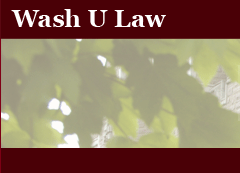Article Title
Real Discrimination?
Publication Title
Washington University Journal of Law & Policy
Abstract
Part I of this Essay examines Hibbs and criticizes the distinction that it draws in allowing Congress much greater authority to act under Section 5 for some types of discrimination than for others. Part II explains the Court’s error by focusing on a specific example: the authority to sue states under Title II of the Americans with Disabilities Act for discrimination against people with disabilities in government programs, services, and activities. Under the reasoning in Hibbs, Congress does not have the same authority to authorize suits against disability discrimination as it does for gender discrimination. This is fundamentally misguided, as there is an even greater need for Congress to be able to deal with types of government discrimination where constitutional challenges are less likely to succeed. In Tennessee v. Lane, the Court held that states sometimes can be sued under Title II, when a fundamental right is implicated. This is misguided in that states always should be able to be sued under Title II. Finally, Part III argues for an alternative conception of Congress’s powers under Section 5, one that would broadly empower Congress to act to prevent and remedy government discrimination.
Recommended Citation
Erwin Chemerinsky,
Real Discrimination?,
16
Wash. U. J. L. & Pol’y
97
(2004),
https://openscholarship.wustl.edu/law_journal_law_policy/vol16/iss1/8
